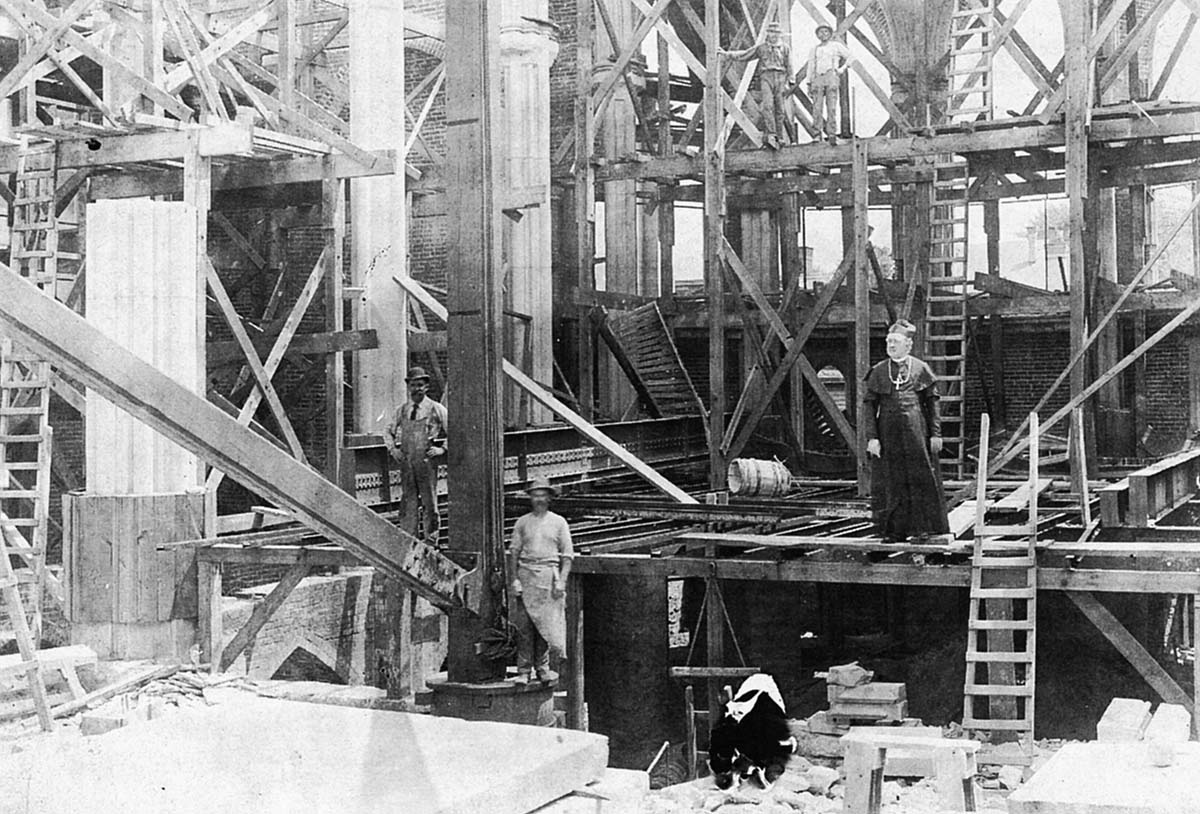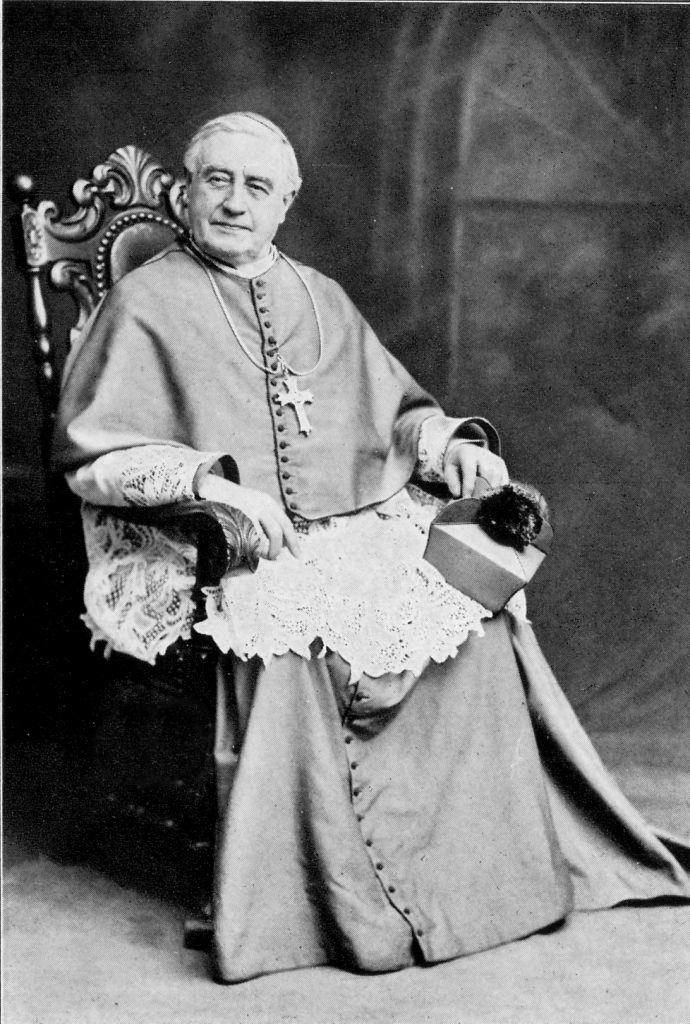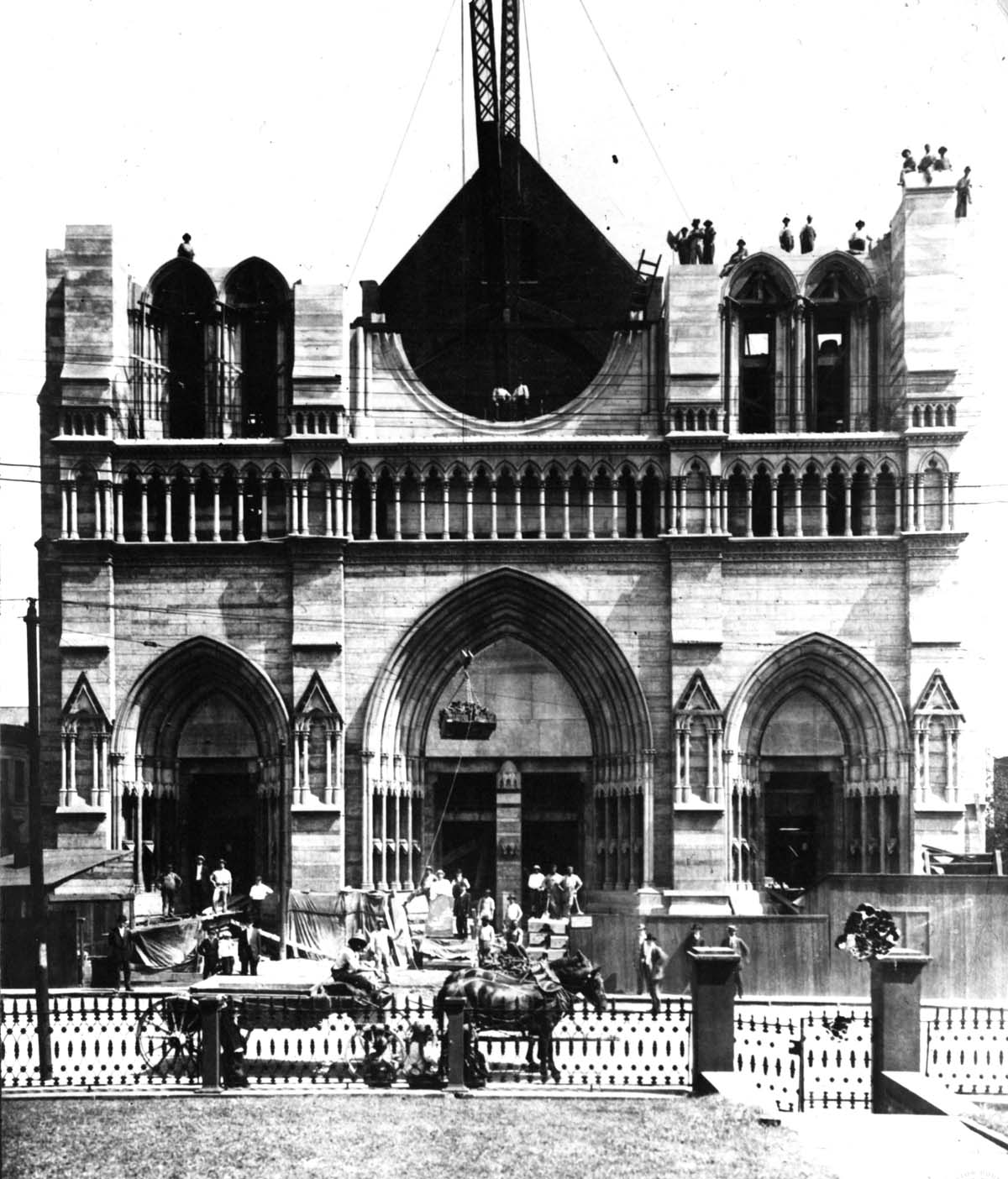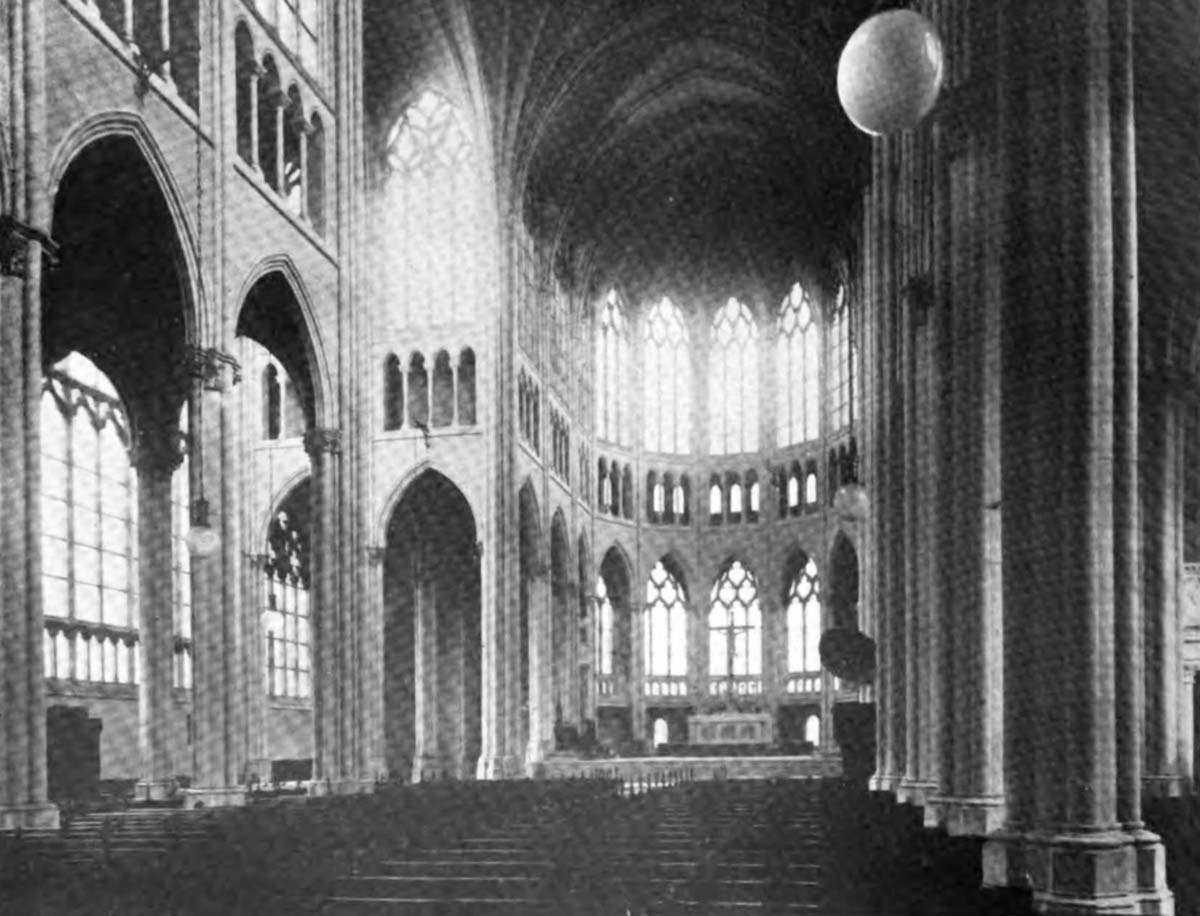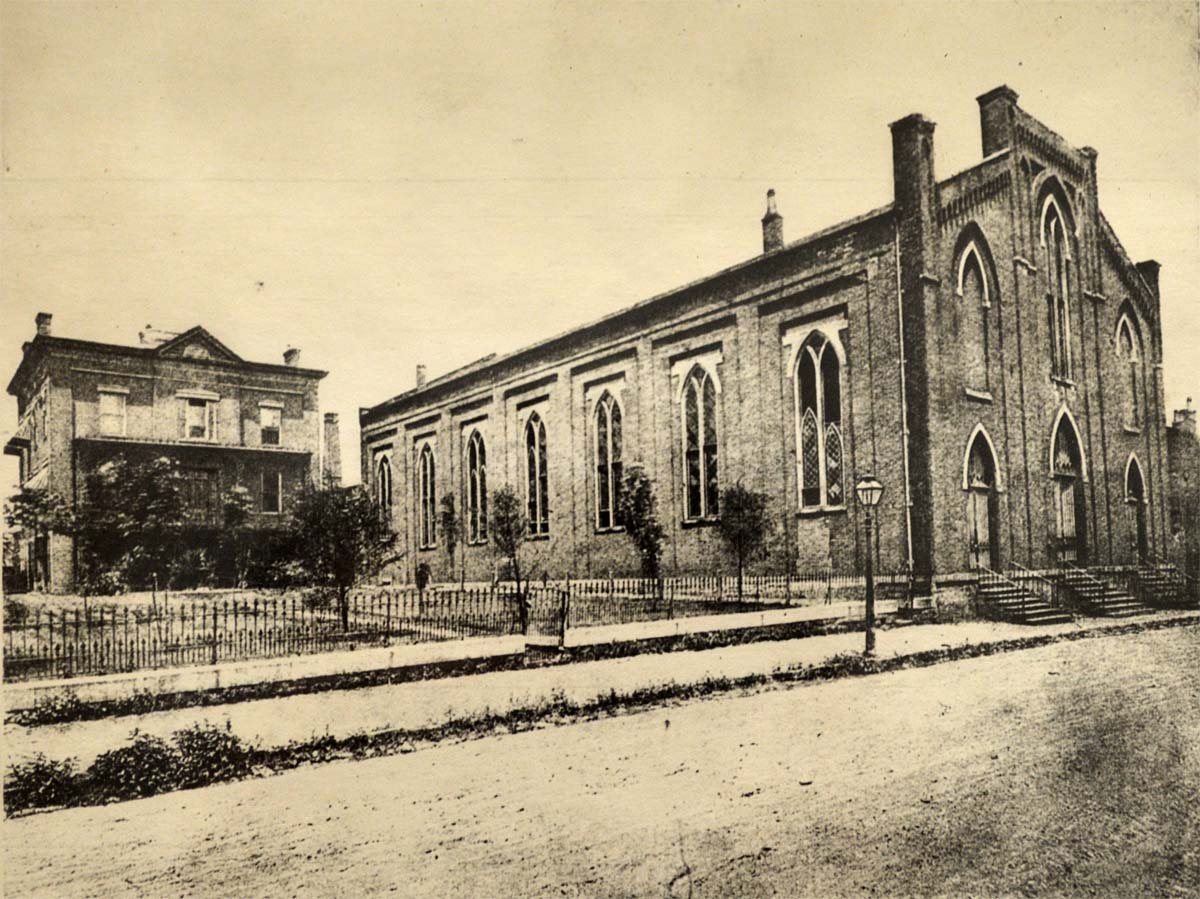By Stephen Enzweiler, Messenger Contributor.
(Part II of a series on the legacy of Bishop Camillus P. Maes.)
Bishop Camillus Paul Maes had hardly been bishop six months when he began to realize the enormity of the problems he faced as the new shepherd of Covington. The diocese at the time numbered 42 parishes, with just 38 priests to minister to 38,000 Catholics. The enormous size of the territory, the fewness of priests, and burdensome financial trials had narrowed the sympathies of the people, centralizing their interests on their own parishes with little or no interest in the diocese as such.
The symbol of this narrowness was the cathedral itself. Constructed in 1854, the aging Mother Church had fallen into significant physical decline and was considered beneath the dignity of the diocese. In 1872, the <
Maes realized he would never be able to build a new cathedral until he first eradicated the substantial diocesan debt accrued by his predecessors. “My debts weigh heavily on my young shoulders,” he wrote Cincinnati’s Archbishop Elder, “they being little short of $100,000 in a poor southern diocese!” From the pulpit each Sunday he pleaded for contributions, held fundraising coffees at his residence, and petitioned prominent businessmen for assistance. Nothing was enough.
Until one day when hope entered his world in the form of a little girl with a silver dollar who tasked him to “build a new Cathedral with it.” In the child’s impossible request Bishop Maes seemed to recognize the elements of a divine commission. In the same way he believed that the Virgin Mary once saved him from drowning in a Courtrai river as a boy, he also came to believe that he had been chosen by God to build the new house of worship for the people of Covington. He understood that if God wished it, God would provide the means to make it happen. What he also began to understand was how a new Mother Church could heal the narrow spirits of the people and reunite a diocese.
The erection of a new St. Mary’s Cathedral would occupy Bishop Maes’ attention for the rest of his episcopacy. He began to formulate plans, drawing upon the skills he learned working in a Courtrai architect’s office as a boy. He worried constantly over burdening his people with debt and resolved to build in a way that would save both time and money. He applied repeatedly for loans but was systematically turned down, even being told by one bank “institutions of your kind are in the unfortunate habit of never repaying their loans.”
Then, in April 1890, James Walsh, Sr., a wealthy Covington distiller, died and bequeathed $25,000 to the bishop “for a new St. Mary’s Cathedral.” Two years later, his son James Walsh, Jr. and Peter O’Shaughnessy gifted the bishop $100,000 specifically for a new cathedral. For a building location, Bishop Maes purchased two properties at the corner of Madison Avenue and Twelfth Street — a site that at the time was considered to be the center of Covington.
For his architect, he chose 31-year old Leon Coquard of Detroit, a talented artist who had worked as a draftsman under architect Albert E. French during the construction of Detroit’s gothic masterpiece — the Church of St. Anne. From the beginning, Bishop Maes never considered anyone else for the job. He had known Leon for years, had known the family, and the two shared a love of art, architecture and design. “I have my own way in selecting you against the notions and personal interests of many here,” he wrote his young friend. “The fact that I select you without competitive plans is because I am pleased with your art and work … knowing that you will give me the best work you are capable of.” To his friends, the bishop remarked that he saw in Coquard “the promise of great ability, even of genius.”
The bishop’s first inclination was to build a basement church that could be used for several years until funds could be raised to construct a more sufficient edifice. He would later change his mind after Coquard suggested a design similar to that of St. Anne’s in Detroit. Because its gothic design suited him, Bishop Maes concluded that he could save a significant amount of time and costs in architect fees if Coquard built Covington’s cathedral in the same manner. “You will have heard through friends that I was very much pleased with your work, and that St. Anne’s Church … strikes my notion, as to general lines, as to what my new cathedral will be.” But Coquard was a perfectionist, and in the end, he became dissatisfied with his plans.
In 1893, Coquard sent Bishop Maes a new set of sketches showing a cathedral exterior designed to give the impression of Notre Dame with a façade after Cologne Cathedral. He also proposed designing the interior after the Abbey of St. Denis in Paris, sending a photograph of it with the note: “It is so nearly the idea I am trying to carry out in the interior of your cathedral that it would be impossible for me to make a view which would explain my design so well as this.”
But the architectural splendor of Coquard’s proposal alarmed Bishop Maes, who feared the tremendous burden of debt such an elaborate structure would incur. “It does not follow,” Coquard reassured him, “that because a building is of good proportion and elegant in appearance that it is of expensive construction.” Bishop Maes insisted he could not afford it, to which the youthful architect replied, “I feel satisfied that the cost will come nearer your figures than you expect.”
On April 13, 1894, a reassured Bishop Maes turned over the first shovel of dirt at Madison and Twelfth to begin construction. It would take seven years to complete the main body of the church. Coquard designed the columns, buttresses, piers, arches of the nave, transepts and triforium galleries to be constructed entirely out of Bedford limestone, with walls faced with limestone inside and out. Capitals of the columns were made of ornate terra cotta and the window tracery of carved stone.
The first several years saw good progress, despite concerns, problems and potential setbacks. Correspondence reveals that Bishop Maes was engaged almost daily in reviewing plans, approving details, suggesting modifications and in some cases, redrawing them. He visited the construction site often to monitor the pace of work, note deficiencies, correct the contractors, and insist on changes, which he detailed in letters to Coquard or his on-site supervisor Charles McDonald. Arguments arose frequently as the architect insisted on the latest construction methods, causing Bishop Maes to recoil against the increase in costs. By 1898, the roof was on, and by Christmas 1900, the new St. Mary’s Cathedral was ready to be dedicated. But lack of available funds did not permit construction of the façade, leaving its front a towering brick wall.
Its dedication on Jan. 27, 1901 was one of great joy for the people of Covington. Although it stood unfinished, the new cathedral church was a masterpiece of French Gothic style, exemplifying the expression of pure lightness, exquisite grace and soaring height. Light filled the interior, giving it the appearance of a shimmering “cathedral of glass.” The public gasped at its beauty.
For eight years, St. Mary’s stood without a façade. In 1904, Nicholas Walsh, grandson of James Walsh, presented Bishop Maes with $100,800 in bonds for the project. Coquard drew up the plans. But in autumn 1906, he fell ill, forcing the Bishop to contract Newport architect David Davis for the work. Construction began in 1908, and for two years Covington watched anxiously as the gothic Phoenix rose into the sky. On June 29, 1910, the façade was finished and officially dedicated in a joyous celebration that drew thousands from all across the area.
That day was also the day Bishop Maes had chosen to celebrate his Silver Episcopal Jubilee. But the years of toil building the cathedral had taken their toll on Covington’s shepherd. His hair had grown white, his gait slowed, his eyes grown tired. His health had become a concern, too. But the work was done. He completed what the little girl tasked him to do. He fulfilled his divine commission. At the façade’s dedication, Bishop Maes took the opportunity to express his heartfelt feelings about the cathedral he felt privileged to have built for his people:
“Twenty-five years of life in this community have made me devoted to the spiritual and civic interest of the city of Covington. It has been my ambition to give the public a token of my love for the city by erecting in it a monument which will speak for centuries to come of the love of Christ for souls. Indeed, the message of the Cathedral is the message of Christ Himself. The Cathedral is the leading feature of the City, just as religion ought to be the “Leitmotif” (the leading guide) of our lives … Centered within the Cathedral are all the spiritual means which Jesus Christ places within His Church for men’s salvation. Enter it freely, seek the Corpus Christi Chapel, where the quiet and mysterious light shed around you enables you to enter into yourself, realize God’s presence and help you on your way to see God’s will and lead a Christian life.”
When Camillus Paul Maes died on May 11, 1915, the sound of tolling church bells echoed across the cities of Northern Kentucky, bidding farewell to the man who gave the people a gothic masterpiece that would speak to them for centuries to come.
<

